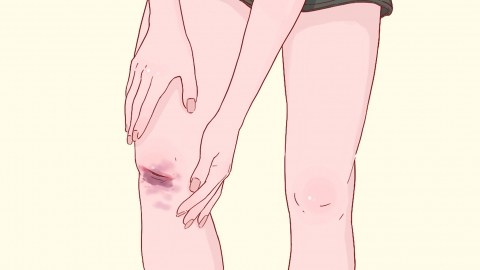Why do the muscles around the incision site twitch?
In general, muscle twitching around the surgical incision may be caused by postoperative muscle repair stimulation, poor local blood circulation, localized inflammation at the incision site, nerve damage, or electrolyte imbalances. It is recommended to seek medical attention promptly, identify the underlying cause, and receive symptomatic treatment under a doctor's guidance. Specific causes are analyzed as follows:

1. Postoperative muscle repair stimulation: During the healing process of the incision, regenerating muscle tissue may produce mild irritation, leading to localized muscle twitching. Avoid excessive movement of the incision area, ensure adequate rest, and perform gentle local massage as appropriate to promote muscle relaxation and alleviate twitching symptoms.
2. Poor local blood circulation: Surgery may affect blood vessels around the incision, causing impaired circulation. Insufficient blood supply to the muscles can result in twitching. Local heat application can help improve blood flow—apply heat for 15–20 minutes per session at a temperature of 40–45 °C, taking care to avoid burning the incision site.
3. Localized incision inflammation: Bacterial infection due to improper wound care can cause inflammation that irritates surrounding muscles, resulting in twitching, possibly accompanied by redness, swelling, and pain. Patients should follow medical advice to use antibiotics such as cefuroxime axetil tablets, amoxicillin capsules, or metronidazole tablets to control infection. Keep the incision clean and dry, and avoid contact with water.
4. Nerve damage: Nerves near the incision may be injured during surgery, leading to abnormal nerve discharges that trigger muscle twitching, which may be accompanied by numbness. Follow medical advice to take neurotrophic medications such as mecobalamin tablets, vitamin B1 tablets, or vitamin B6 tablets to support nerve repair and reduce twitching.
5. Electrolyte imbalance: Poor diet or fluid loss after surgery may lead to deficiencies in electrolytes such as calcium and potassium, increasing muscle excitability and causing twitching. Mild imbalances can be corrected through dietary adjustments—consume more milk, bananas, and other electrolyte-rich foods. In severe cases, intravenous or oral supplementation with medications such as calcium gluconate injection, potassium chloride injection, or calcium chloride injection may be required under medical supervision.
For daily care, protect the incision from friction or pressure. Maintain a balanced diet rich in sufficient protein, vitamins, and minerals to support recovery. Additionally, maintain regular sleep patterns, avoid overexertion, and minimize factors that may trigger muscle twitching.




